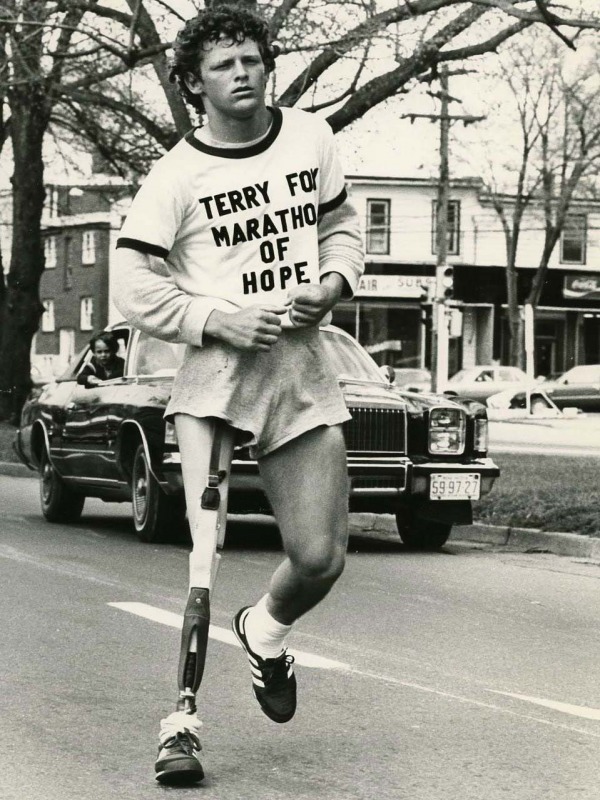Home | Major Sporting Events | Terry Fox Run
History of Terry Fox Run
PreviousNext
In the history of Canadian sport, Terry Fox stands out as an exceptional symbol of courage, compassion and hope. He remains one of Canada's most beloved sports heroes because of the extraordinary lengths he went to help others in the face of hardship, suffering and loss.
Born in Winnipeg in 1958, Terry became active in sports while growing up in Port Coquitlam, B.C. After turning 18 he was diagnosed with bone cancer and forced to have his right leg amputated above the knee. While recovering in hospital, he was inspired by the other young cancer patients he met who were facing uncertain futures with tremendous bravery and hope. The same illness that changed his body so dramatically had strengthened his spirit, and once he had recovered Terry decided to run across Canada to raise funds for cancer research.
Terry spent 18 months conditioning, running over 5,000 kilometres to perfect a unique shuffling gait that enabled him to run long distances with a prosthetic leg. Dubbed the Marathon of Hope, his cross-country journey began in St. John's, Newfoundland on April 12, 1980. As he made his way across the Maritimes and into central Canada, Terry was running nearly 42 kilometres daily, the distance of an ordinary marathon over and over again, often in difficult weather conditions.
After 143 days and 5,373 kilometres Terry was forced to stop running outside of Thunder Bay when cancer was discovered in his lungs. Returning to B.C. for treatment, he lost his second battle with the disease and passed away at the age of 22 on June 28, 1981. However, his legacy lives on in the Terry Fox Run, an annual fundraising event held in communities across Canada and around the world that has raised millions of dollars worldwide for cancer research in the wake of his passing.

On April 12, 1980 Terry Fox dipped the toe of this running shoe in the Atlantic Ocean near St. John's, Newfoundland and began his quest to run across Canada. He had been inspired by the story of another amputee Dick Traum who had run in the New York Marathon. His courage in facing his cancer and his compassion for others led him to a challenge few others would be willing to try.
Collection: Canada's Sports Hall of Fame

Terry Fox's right leg had been amputated above the knee due to cancer. As a survivor he felt that he had to contribute by raising awareness and money for research for this disease. He wore this T-shirt during the run which he called the MARATHON OF HOPE. In his letter to the Cancer Society he said "I am not a dreamer, and I am not saying that this will initiate any kind of definitive answer or cure to cancer. But I believe in miracles. I have to."
Collection: Canada's Sports Hall of Fame

Terry began training for his run shortly after his surgery using a prosthetic leg that was modified to better withstand the impact of running. Despite the modifications it was still awkward and uncomfortable. He ran the equivalent of a marathon every day, often alone on the road during the early stages of the run. His persistence, determination and humility made him a national hero.
Collection: Canada's Sports Hall of Fame

Terry started his run with very little publicity but as he continued on his quest more and more people became aware of it and turned out to run with him. As he ran through Ontario thousands would come out to see him. His aim, which was to raise $24 million for cancer research was achieved and today his legacy, the annual Terry Fox Run, continues to raise funds for cancer research.
Collection: Canada's Sports Hall of Fame

Terry Fox had to end his Marathon of Hope on September 1, 1980 at Thunder Bay, Ontario when his cancer reoccurred. By this time he had run for 143 days and covered 5,373 km. This memorial to him stands along the Trans-Canada highway. The cancer which finally took his life is now considered curable.
Collection: CP PHOTO/Gary Hershorn
Previous Next


